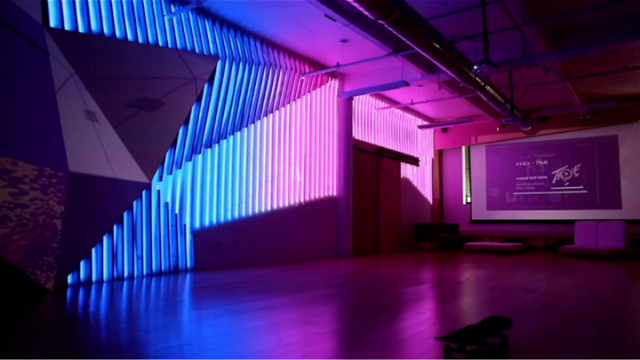dd:OUTPOST _ Personalized Environment from volvoxlabs on Vimeo.
Light on its own can be a powerful medium for transforming a space. When that light is formed into an image, the customization is as fluid as pixels on a display. So, there’s a reason we hear terms like “responsive architecture” or even “interactive architecture.” We may see environments become as changing as the computer before our eyes. The question is, how, exactly?
VolvoxLabs, a Brooklyn-based design house specializing in visual effects and projection design, showed one vision of how this might work, for Digital Dumbo (in partnership with Bing).
The ingredients, in short, involve the display, data, and human presence and control:
A mapped projection screen and connected lighting
Internet-connected, socially-wired data sources
A touchscreen interface for control
Presence sensing via Kinect
Lots of gadgets connect here – this is projection mapping meets the Internet of Things, potentially. There are 70 LED strips, an Xbox, Windows 8, Kinect cameras, Twitter and Instagram feeds at work. And big screens matter, too – 200″ in this case.
In this case, there’s a nice corporate client and some money. But similar sorts of connections could be made on the cheap in future, suggesting fluid embedded connections in many, many contexts.
TouchDesigner was at work again, natch.
Details:
ddOUTPOST | Digital Dumbo at Volvox Labs


Images courtesy Volvox Labs (top) and Derivative (bottom).